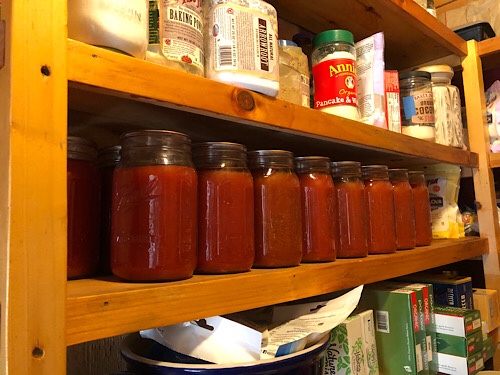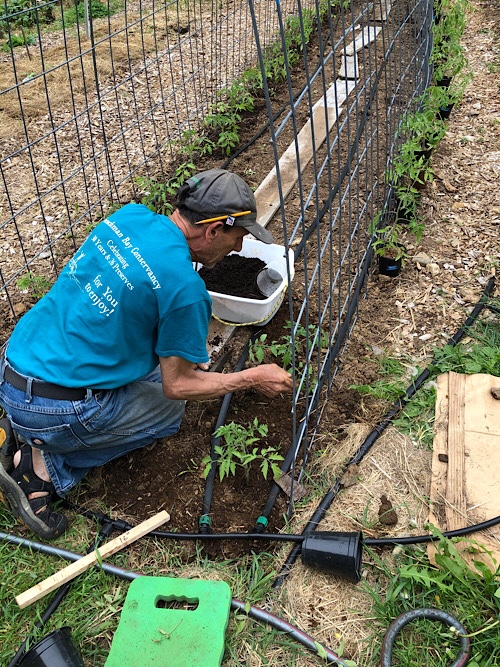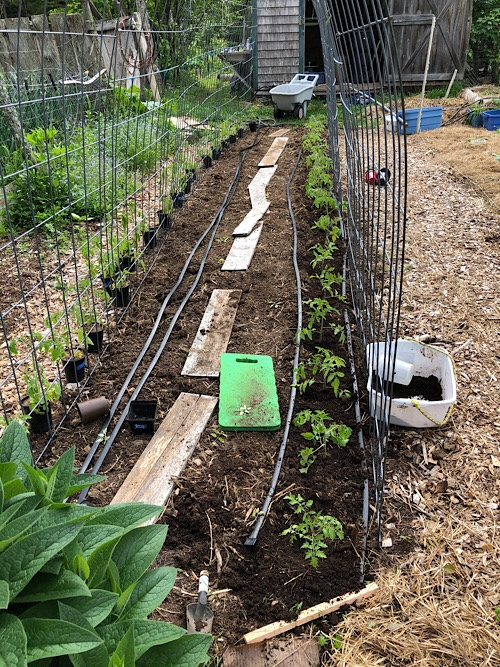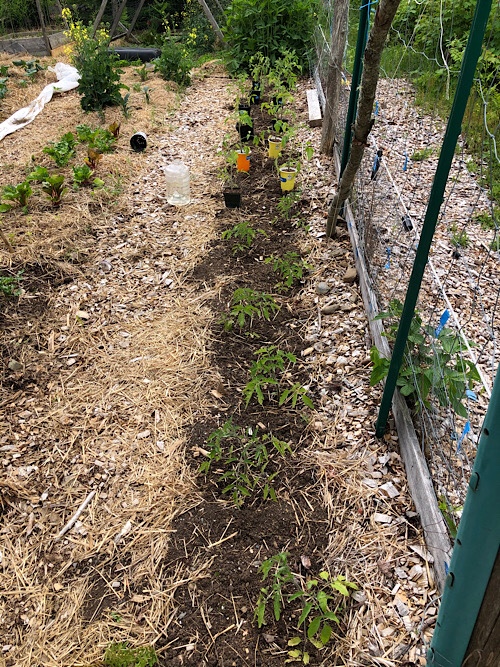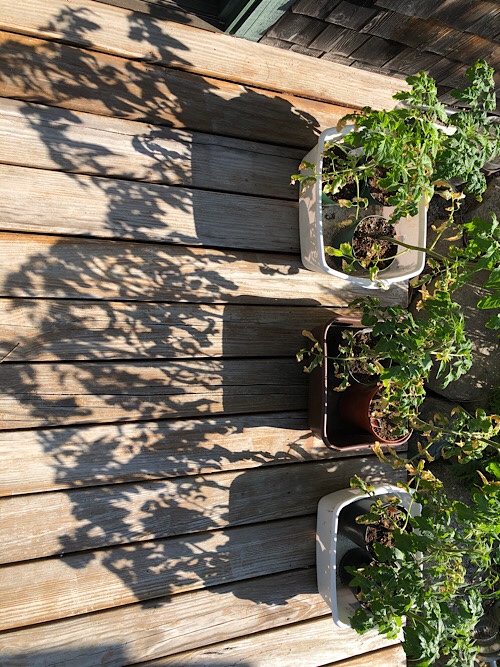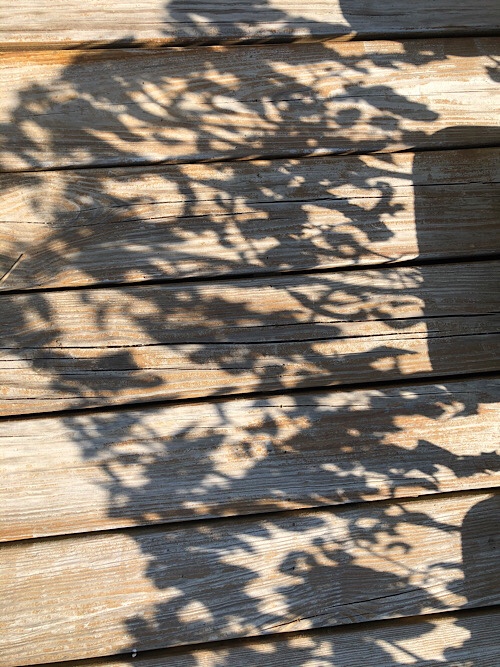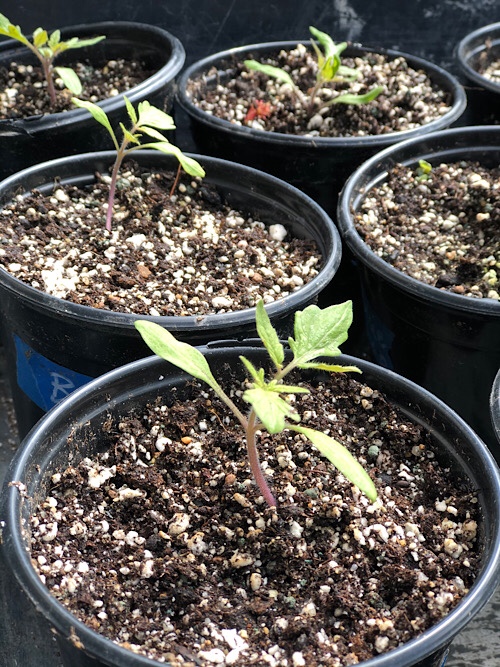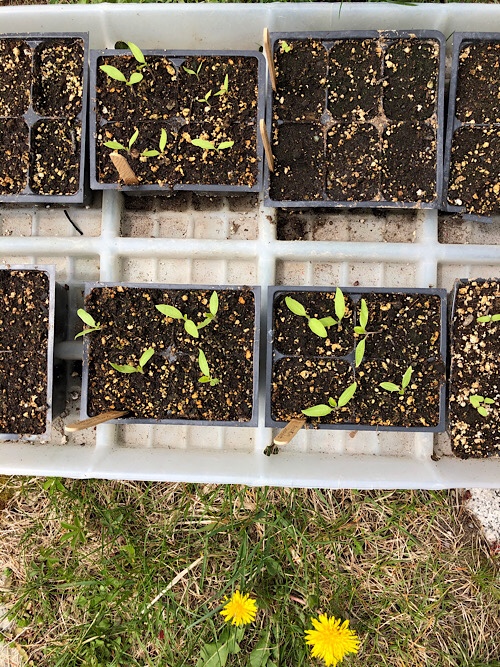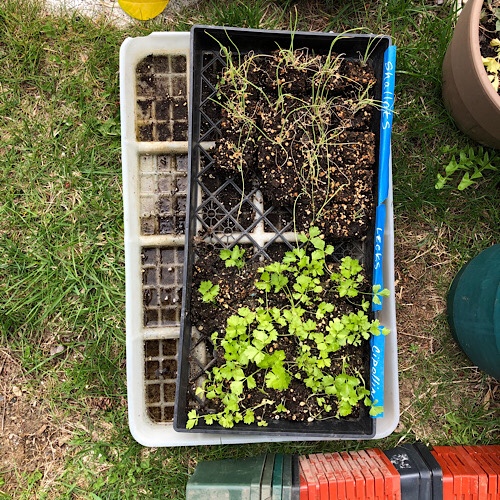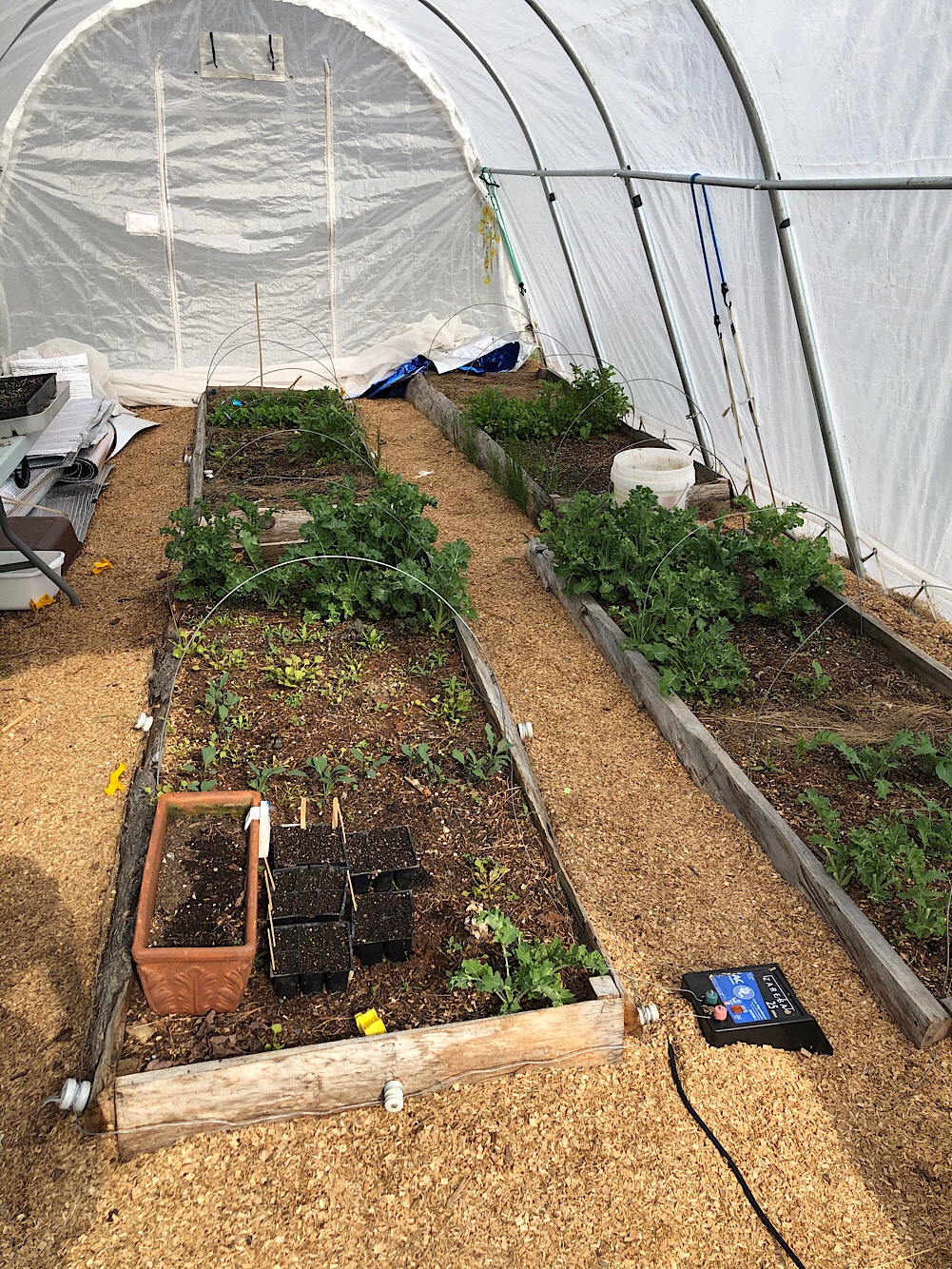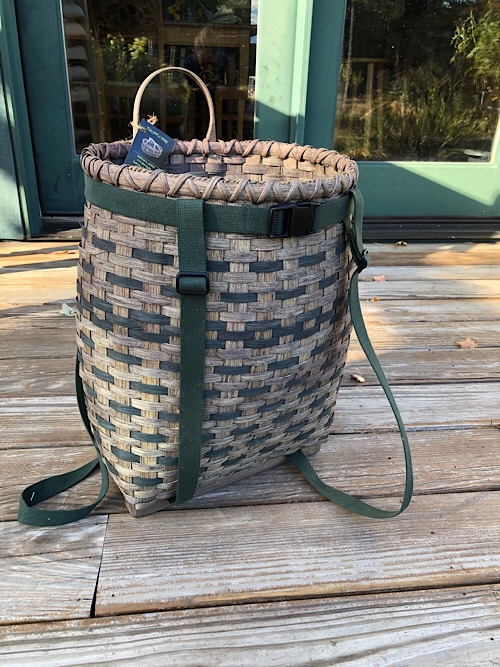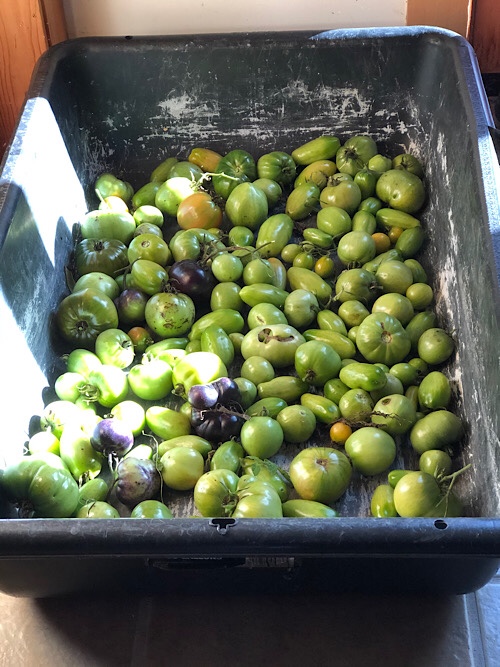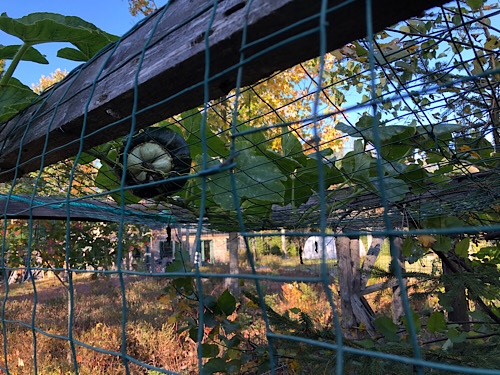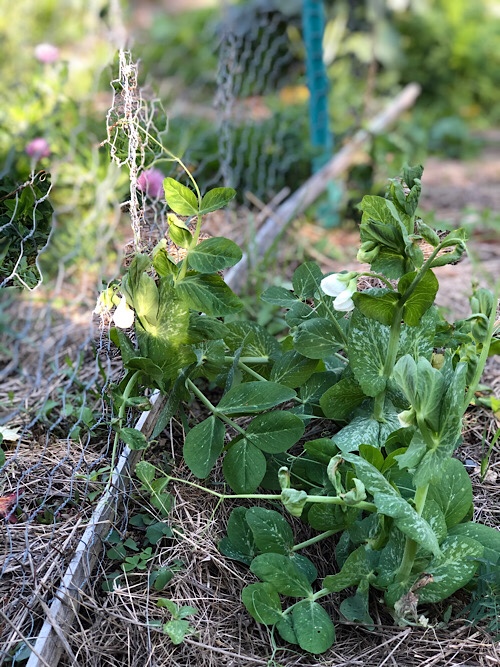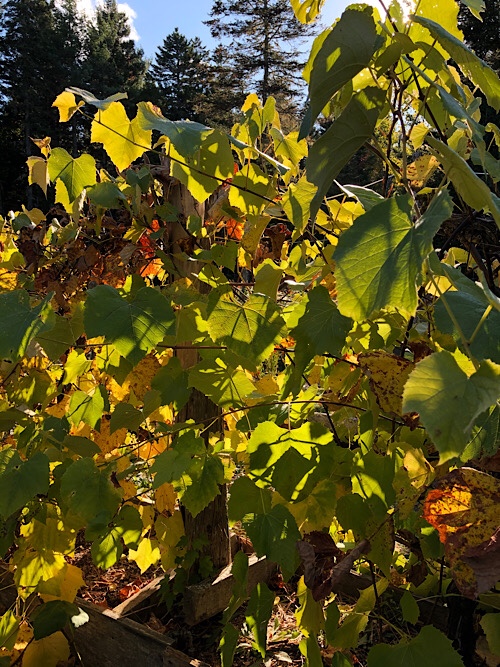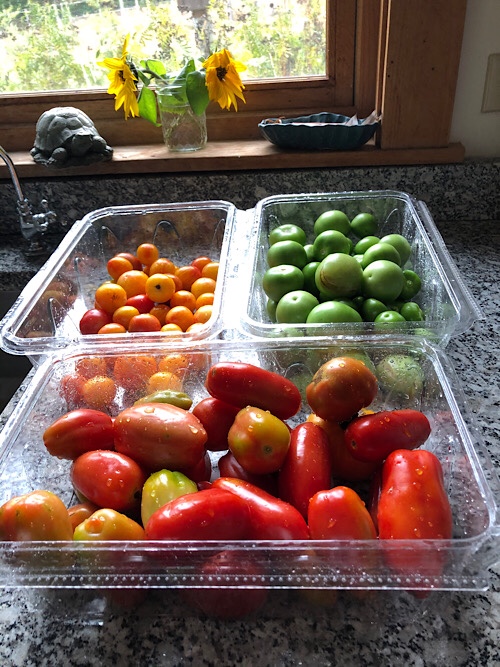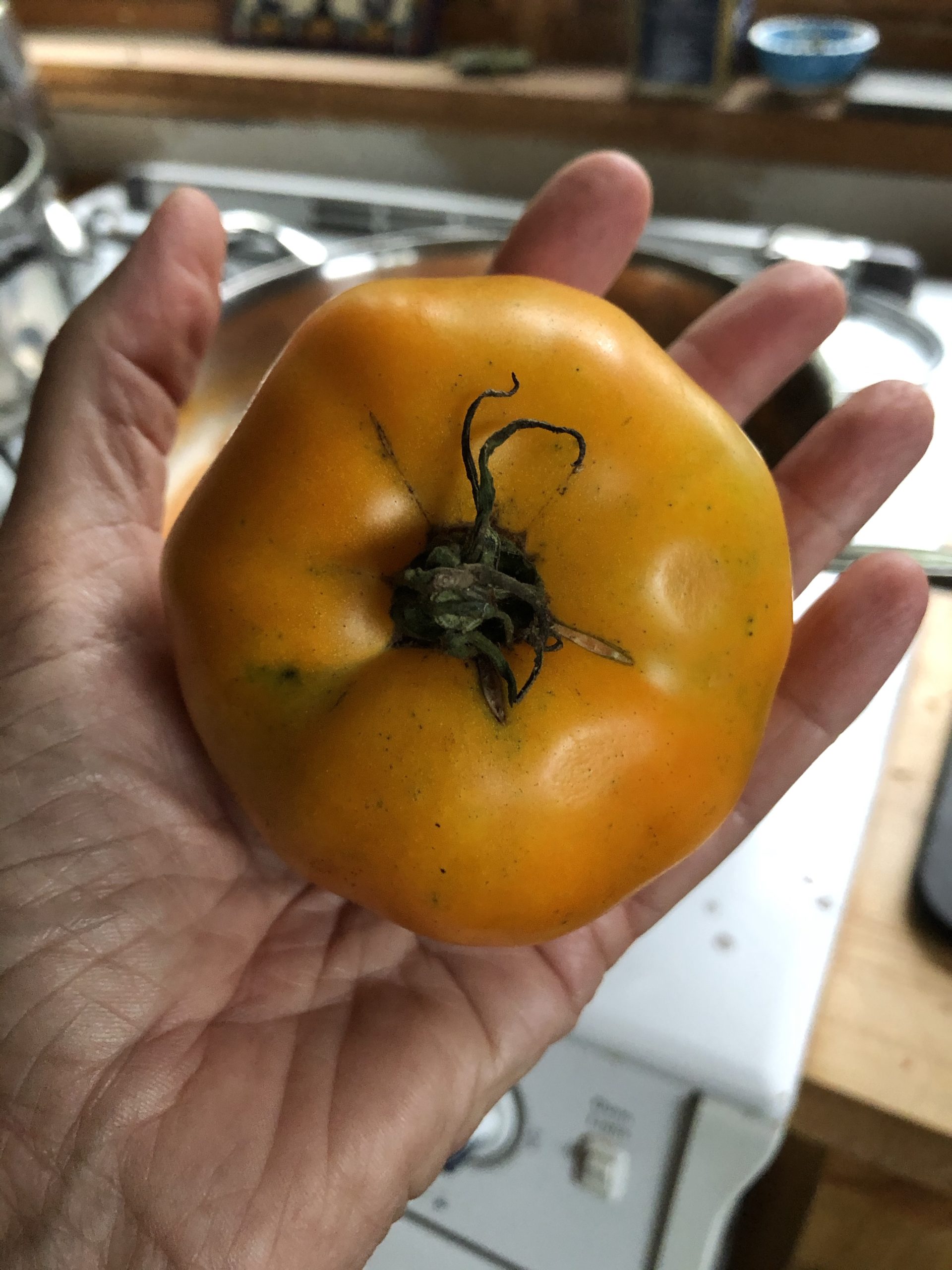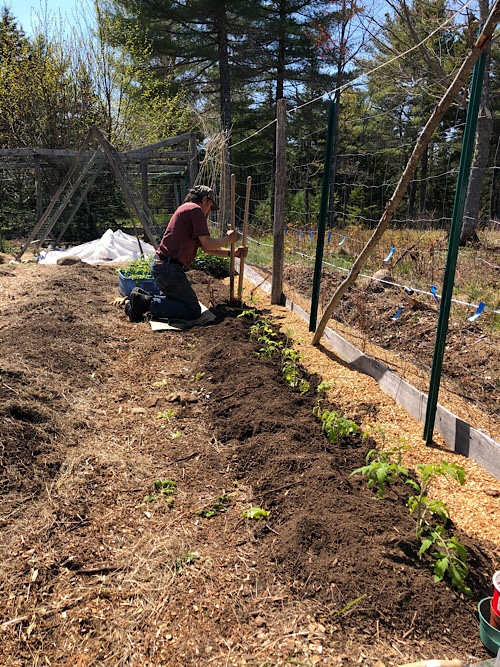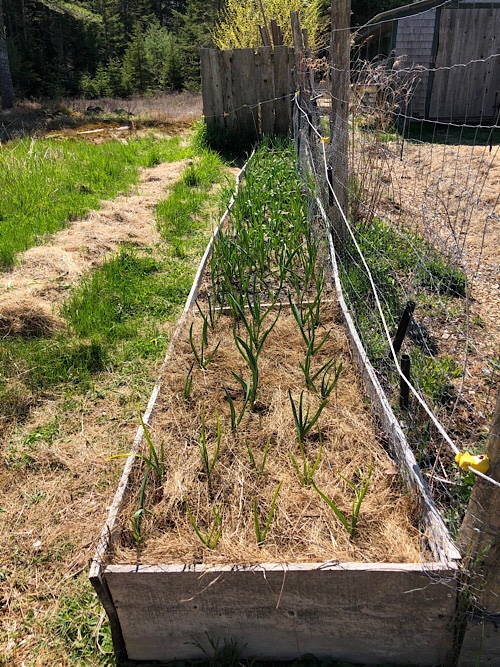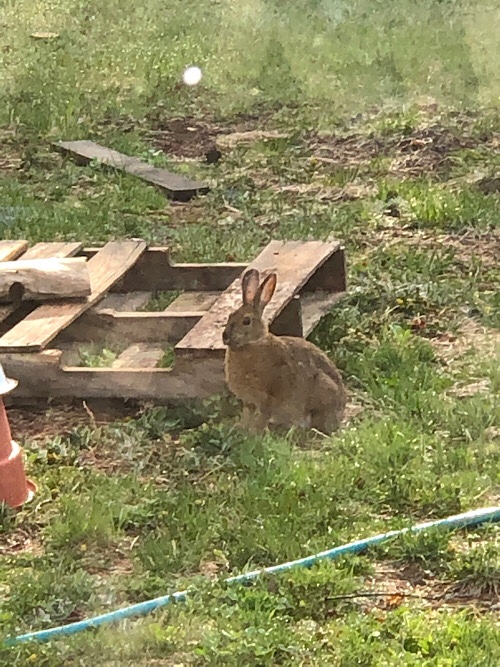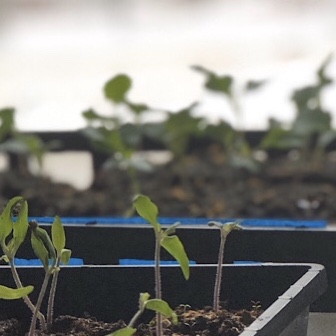Well, canning is done. Our tomato harvest was inadequate, so we bought twenty pounds of seconds from Happy Town Farm. This worked great to supplement our supply.
Every year, we seem to reinvent the wheel by rediscovering guidelines that make the process more effective. The less guesswork, the faster and easier it gets. By the end of the season, we are pretty good at it. Then we forget until next year, when we start the learning curve all over again.
So here’s an attempt to record a few of the learnings from this year’s canning.
For our process, the rule of thumb is 9 pounds of tomatoes are needed to make a batch of three quart jars of sauce. In other words, 3 pounds per quart. This is before trimming off ends and bad spots.
We clean and heat the jars, then add a 1/2 teaspoon of citric acid, to ensure good acidity levels in the sauce.

We wash, trim, and rough-chop the tomatoes, then pile them into large saucepan. We usually don’t add any flavorings, assuming we will flavor as needed when using the sauce. This also reduces the marking and notating necessary on the jars. This year we didn’t do any marking on the jars – a time savings, but we’ll have to use up all of them this season. If we don’t, I’ll put the year on them before we make more.
When the sauce has cooked down into a more liquidy state, we use the food mill to remove skin and seeds. Then replace the sauce in the saucepan and cook down a bit more. Usually it is close to ready after milling and just needs some reheating.

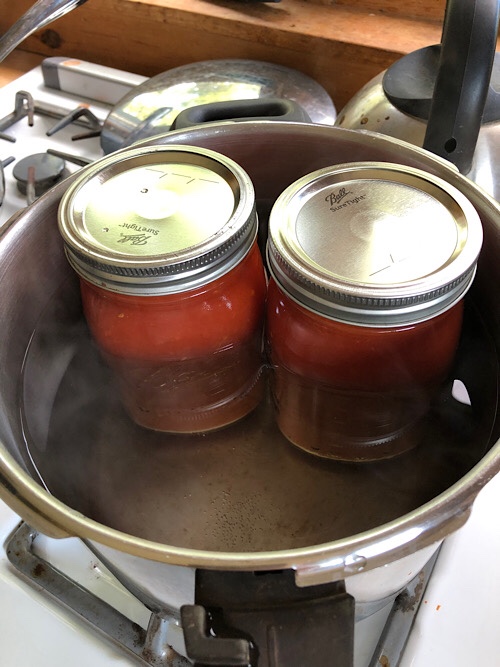



The lids and rings should be clean and warm. Use new lids every year.
Note: they can be hard to find when canning season is in full swing, so stock up if you find them.
Note: we tried Pur brand lids from China this year because they were all we could find for awhile. They did not seal well. Avoid!

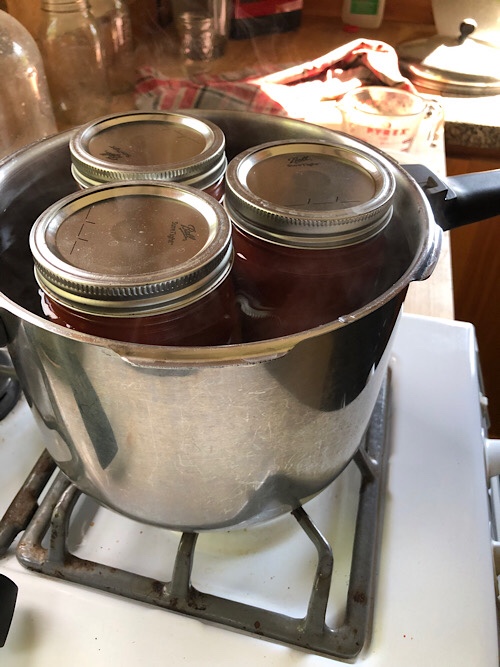
Pressure cook for twenty minutes after pressure is reached. Let pressure release naturally. Then take out jars and tighten rings to aid sealing. Let jars cool on counter. The dimple on the lids should make a popping sound and depress when vacuum occurs.
I think we totaled 19 or 20 quarts this year. Not sure because we used some before canning season’s end.
